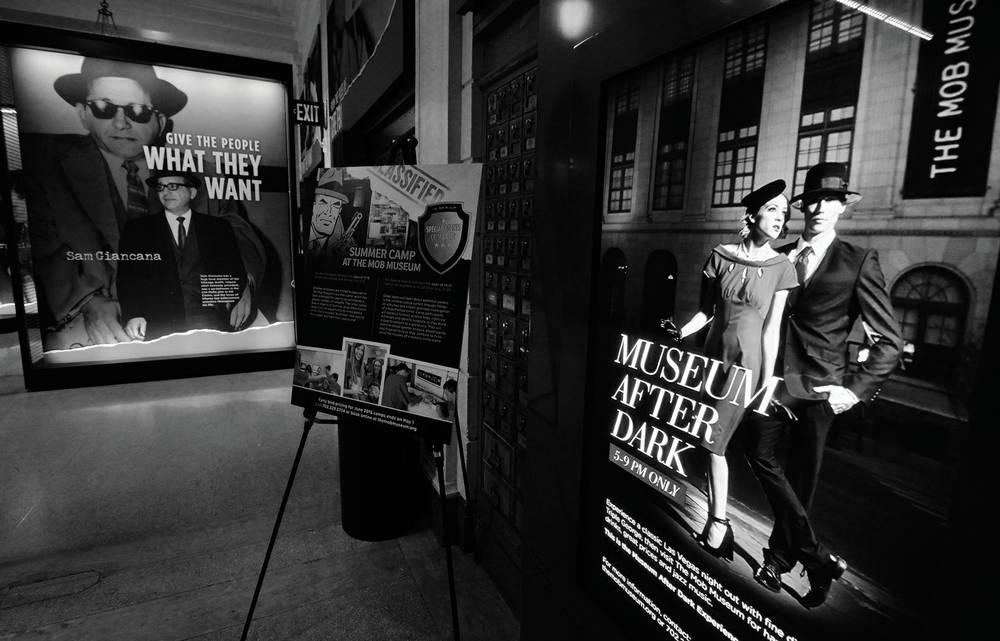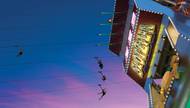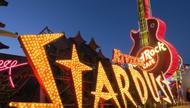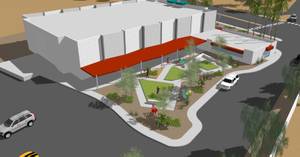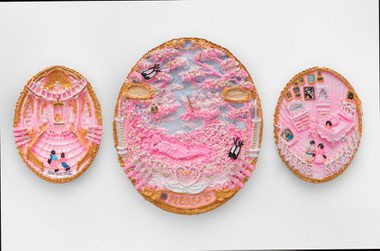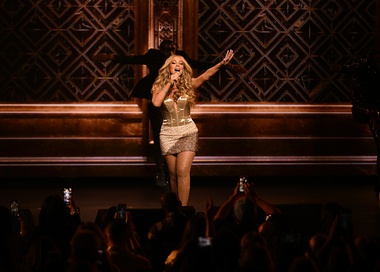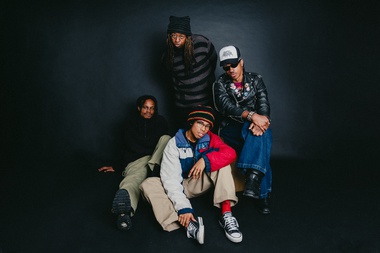Jazz performances are in short supply on Friday evenings in Las Vegas, but there’s one happening inside an unlikely place: a museum—specifically, an old courtroom inside a museum.
Where Rusty the Bailiff would ordinarily stand guard is a trio led by vocalist Kai Brant, playing Prohibition-era standards. Other jazz players appear on the projection screen, as the 1961 film Paris Blues plays without sound. Roughly 25 people, scattered among circular tables up front and wooden benches in the back, shift their eyes between the entertainment sources. Some leave to buy beer or walk through the serpentine halls of the adjacent—and fairly busy—exhibit.
This is not an uncommon scene for a museum, but it is for the Mob Museum, which recently extended its hours and launched an Museum After Dark promotion. And it's not the only sign of expansion—general programming has broadened considerably.
Various happenings have always dotted the calendar, discussions with former governors and notable women in gaming and on the 20th anniversary of the movie Casino having been particularly popular. But there were days when nothing was planned. Now, some days see the Downtown museum hosting multiple events.
This is not merely to compete with the Strip. Four years after its 2012 opening, the Mob Museum can now accommodate a ramped-up schedule reflective of its mission statement emphasizing education, community building and dynamic experiences. But the venue also needed to avoid becoming static, despite a 20 percent increase in attendance for each of the past three years (with 2016 on pace to surpass 2015’s 322,000 visitors). Las Vegans make up 85 percent of the event audiences, but they only represent 15 percent of ticket buyers. The challenge: to build a loyal following with the type of attraction that traditionally struggles to evolve.
“If you’re going to convince people to come back for the first time, who haven’t kicked over simply because of your base offering, you have to do it with additional programming,” says Jonathan Ullman, executive director and CEO. “It’s immensely important that you have a robust calendar [with] events that will resonate with different segments of the audience.”
All he needed was staff dedicated to augmenting the museum’s offerings. So in 2014, Ullman created a Director of Content position, which was filled by former journalist and local author Geoff Schumacher (whom I worked with off and on between 1998 and 2011). Besides overseeing the 15-member Content Department, Schumacher devises much of the Mob Museum calendar with Special Programs Manager Ashley Erickson, everyone from Ullman and the board of directors to content, marketing and production teams assisting in development and execution.
The result is continuous, diversified and balanced programming. It means historical discussions, like the panel-driven Courtroom Conversations, strive to be entertaining, and diversions such as the jazz concerts and Hot Havana Nights parties still aim to enlighten and enculturate—all while maintaining relevance to the greater narrative of organized crime and, in many instances, world affairs. In fact, some of the museum’s most noteworthy material overlaps with today’s news, no surprise given Schumacher’s media pedigree.
“He understands what makes for a good story, and what’s important to distill and disseminate on different historical—as well as contemporary—topics,” Ullman says.
By using Google Alerts like a beat reporter might, he’s become a quick study on all the ways organized crime manifests in the modern day. Every day Schumacher scans the latest headlines for content that could be incorporated into the museum. He did just that when news of the FIFA corruption scandal broke, which inspired a new rotating display on modern-day crime. It was followed six months later by a video and forced-perspective model on the last prison escape of Mexican drug kingpin El Chapo. Both temporary exhibits garnered international press coverage.
Even Breaking Bad found its way into the museum. The costume presentation inadvertently beat out a planned exhibit on the TV show at the Smithsonian by two years. Schumacher doesn’t come from the museum world, which views change with a cautious, even stubborn eye, so turning a new Mob Museum addition around is not unlike delivering a scoop under deadline. “We need to be nimble, and we need to evolve,” he adds.
And a little theatrical masterstroke doesn’t hurt, either. For last March’s “Who Controls Our Prisons?” panel, the museum convinced a former Mexican Mafia member currently in the Witness Protection Program to go public with the very stories that keep him in hiding. To protect him, they pre-recorded his interview at the museum a month earlier, then played back his testimonial, edited to obscure his appearance and voice, at the actual event. The strategy produced a haunting effect—and made a dry news topic more compelling.
The museum’s content and marketing departments have successfully tailored events to appeal to specific groups and niches, too. An author event branded as "The Mob Geography of New York" brought out Big Apple ex-pats, proving that programming with a national focus can pay off in transient Las Vegas. Special tours were arranged in conjunction with Black History Month and Women’s History Month, with women being the target demographic for a UNLV-assisted fashion exhibition in November called Ready to Roar. Kids ages 11 to 17 can attend a weeklong program called Special Agents of Summer Camp, which debuted last July.
And expect locals to fill the old courtroom during a slot-cheating ring panel on June 28 featuring notorious jackpot thief Dick Charlesworth, who will reveal his secrets exclusively to Mob Museum guests. Ditto for the June 19 edition of the museum’s free, public service-oriented Community Safety Forum, where Metro will address how it solves homicide cases—particularly timely with the murder rate rising in Southern Nevada.
“We’d like to be relevant to what’s going on in town, which is part of our mission,” Schumacher says. “We think of ourselves as much more than a dusty history museum.” Depending on its now super-sized calendar, it could be a jazz club, or community center. It’s certainly one of Las Vegas' most versatile destinations.
Mob Museum Daily, 9 a.m.-9 p.m.; $10-$24, children 10 and under free; 300 Stewart Ave.; 702-229-2734, themobmuseum.org.
